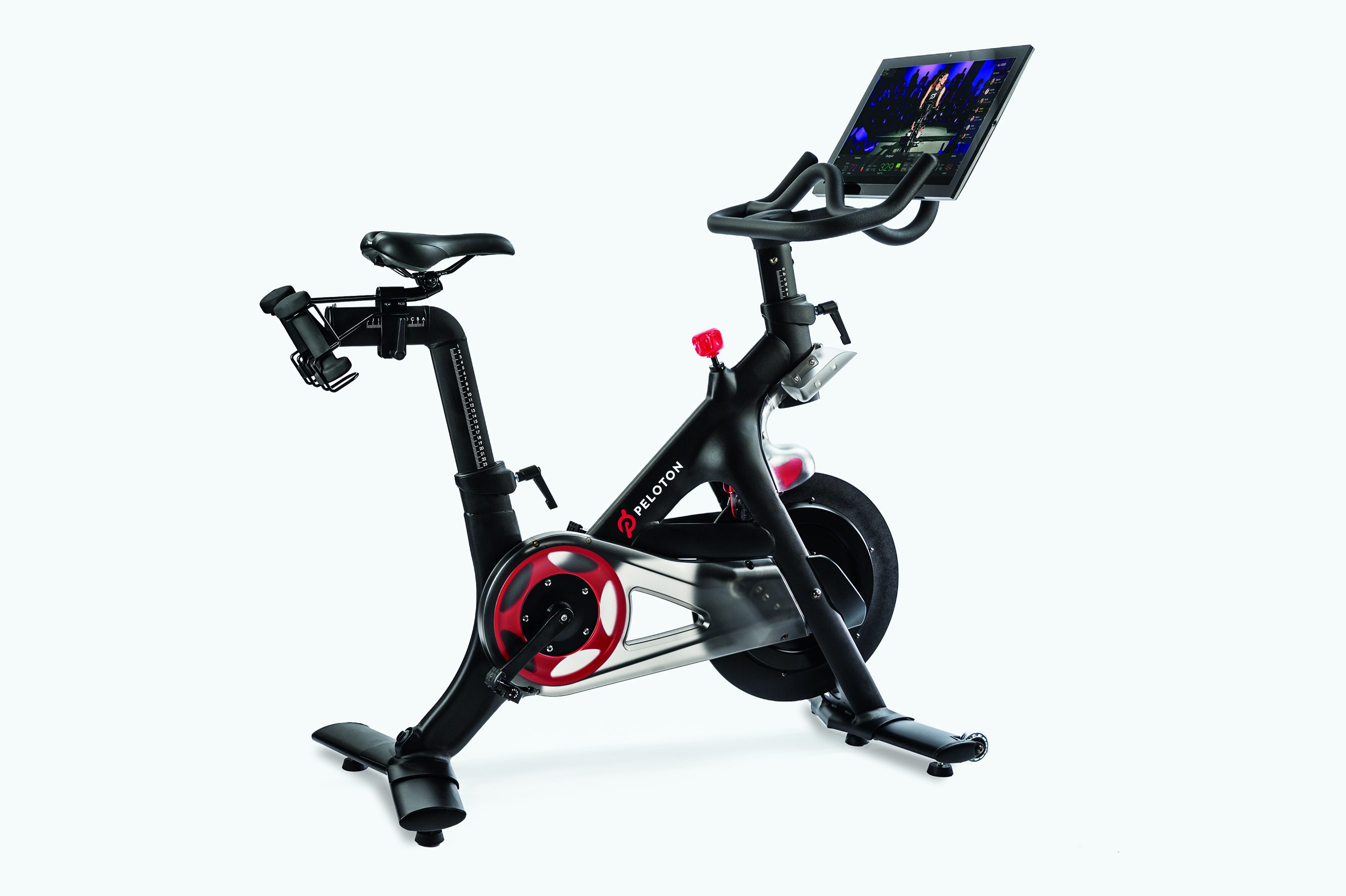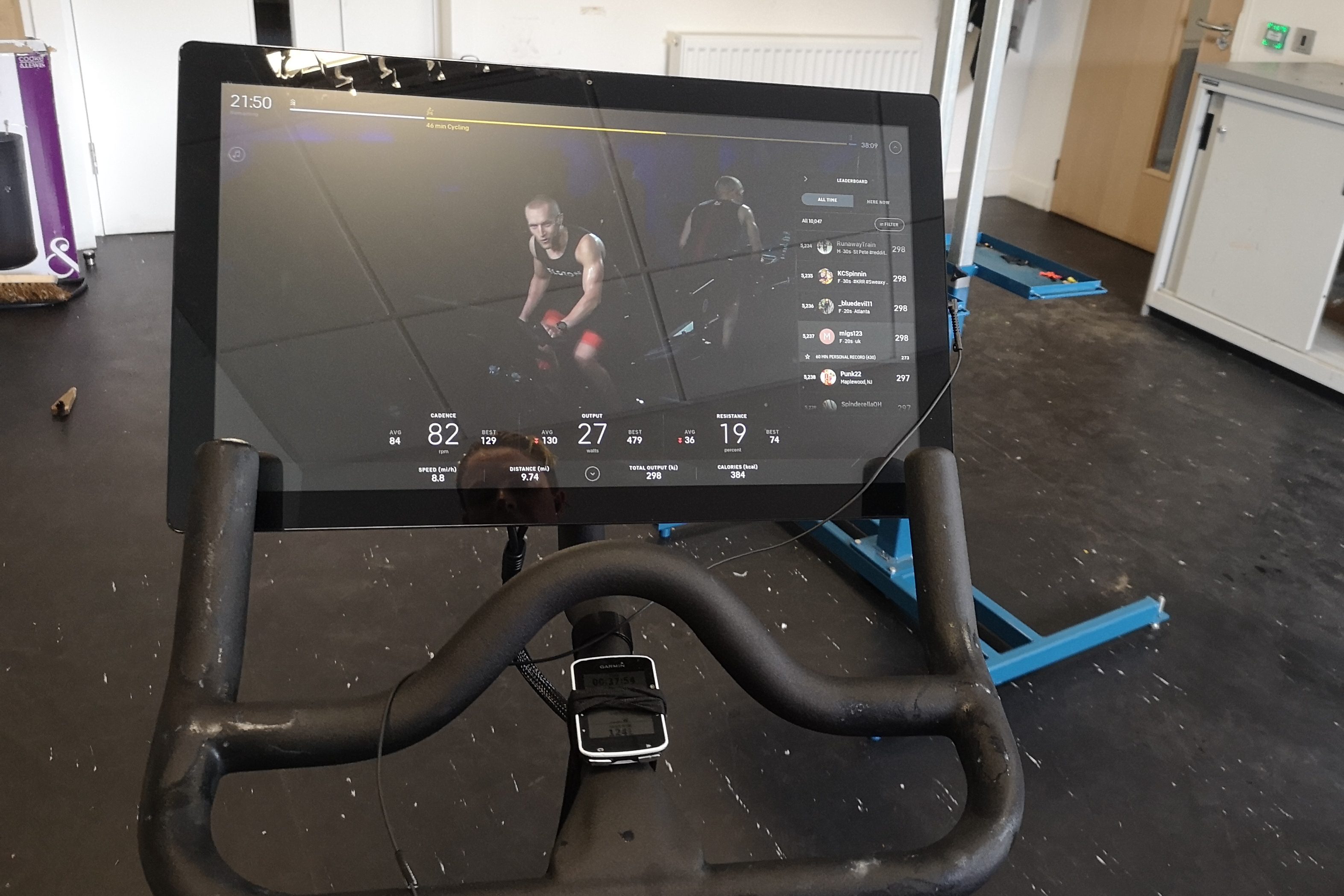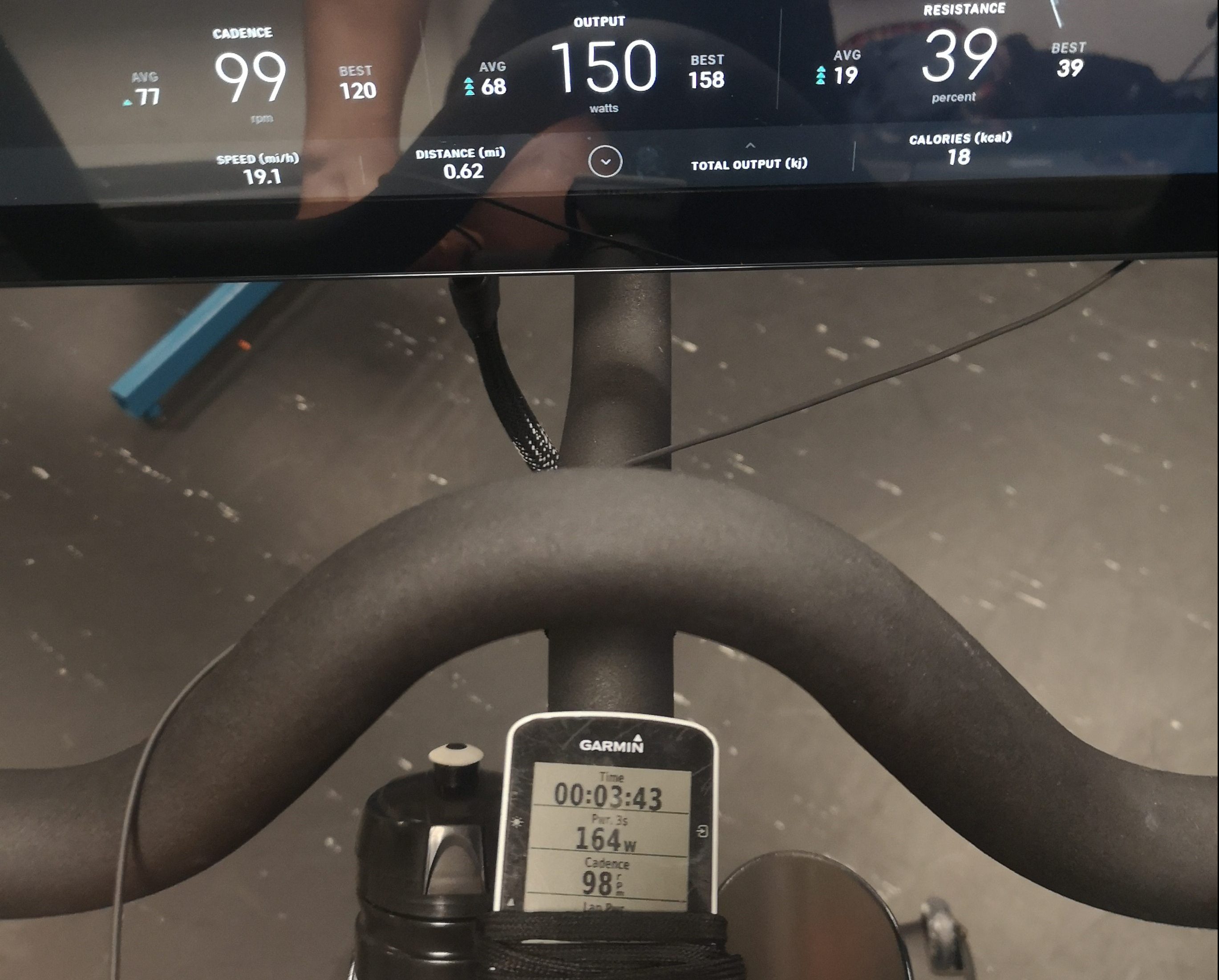Peloton indoor training bike review
Just shy of $1500/ £2000, the Peloton bike and its accompanying app have not made many friends within the cycling community yet. Have we been too quick to judge?

In the end, it's a 'horses for courses' conversation we've got on our hands here. The Peloton bike doesn't provide the sort of data and feedback a lot of competitive cyclists will want. The sessions don't tell you exactly what you'll be doing so it's tricky to choose one which is tailored to your needs and resistance is controlled by hand so you won't be enjoying the interactive climbing experiences you'll get using other apps. However, Peloton brings pedalling to the mainstream market: it's entertaining, and you get a hardcore workout in a limited window of time. Just bear in mind you could also pick up a Wattbike Atom, pair it with the Peloton app, and enjoy the best of both worlds.
-
+
Entertainment ideal for newcomers to cycling
-
+
Easy to adjust between riders
-
-
Expensive
-
-
Estimated power, no strain gauge
-
-
No additional cycling specific metrics
You can trust Cycling Weekly.

A woman wearing a sports bra and a thin sheen of sweat, high on adrenaline shouts: "ok, Peloton, let's do this!" - and with that, America's home spinning sensation announced its arrival.
Whilst mainstream audiences were bowled over with the concept of a complete in-home spin class experience, the bike riding community was hesitant. For an array of reasons Peloton didn't quite make the best first impression.
Whilst the overall marketing concept doesn't quite fit with the image cyclists have become used to, maybe that's not such a bad thing. It's refreshing to see more than one woman in an advertising campaign that has anything to do with cycling, for starters.
It feels like we've done full circle when it comes to home training, however gone are the days of a rickety machine that was only used with spandex and legwarmers. Now some of the best exercise bikes and smart indoor bikes are so advance, you'll question the need to ever go out and get wet on a ride again no matter what level of rider you are or entertainment you need to stay motivated.
First impressions and assumptions aside, can the Peloton bike be a useful training tool for a predominately outdoor cyclist?
How it works
Peloton's offering is made up of the Peloton app and the bike itself.
The latest race content, interviews, features, reviews and expert buying guides, direct to your inbox!
You can sign up to the Peloton Digital app for £19.49 a month, allowing you to do any of the archived sessions or follow along to a class live. There's an extensive library of spin classes, running, yoga and strength sessions.

The coaches will refer to resistance levels and cadence. If you're using your own bike or another indoor trainer, your resistance levels will be different so you'll have to put in a bit of guess work, but it shouldn't be too hard to work out if you should be in a heavy or light gear.
As a non-peloton bike user, you won't appear on the leaderboard (which ranks riders based on their current kJ output) or have interaction with the coach in live sessions.
Comparatively, if you do buy the bike, you'll have resistance, cadence and power appear on the screen and can follow instructions to the 'T' and compare your performance against other users in the class.
The bike
We received the 'Essentials' package, with a bike, matt, shoes, headphones and weights (plus a branded Peloton water bottle).
The bike itself features a heavy flywheel and belt drive, which means that most of the sound produced comes from the speakers on the attached 22" high definition touchscreen sound system, and the user themselves.

Logging on to complete a session is simple - just press the power button on the attached screen, connect to available internet (training over at the Cycling Weekly workshop, I used the hotspot from my phone), and choose either a live session or one from the archives.
I found that the screen would freeze occasionally if connection was lost, but this was rare and resolved itself within 30 seconds.
A resistance knob sits centrally between the handlebars. This was easy to use, though I did find I knocked it a couple of times in out-the-saddle efforts, resulting in a sudden and initially confusing power drop. Once I'd spotted this issue, I kept it in mind and never experienced the same problem again.
The handlebars, fore/aft and of course saddle height are easily adjustable, which made it easy to replicate my basic measurements, though of course the handlebars where much higher than those on my road bike. It's not uncommon for a family to share the bike, and I can't see this being a problem, each user could mark their position with a piece of colour coded tape to speed up swaps.
The legs can be adjusted in case you've got a wonky floor and there's wheels on the front. These meant that despite the 60 kilogram heft of the overall bike, I could move it around the workshop without too much trouble - much to the relief of our mechanic who didn't want to be stumbling over it for the three months I had the bike on test.
Both saddle and pedals can be swapped for your own, but if you stick with the pedals supplied they're compatible with Look Keo cleats. I found with my own (grey) Look cleats, there was too much float, so I opted mostly to wear the Peloton shoes. With the correct combination, the pedal/cleat interface was extremely tight, which meant I could push and pull hard without having to worry about a foot flying out, but unclipping was quite an effort.
The cranks are 170mm, and the Q-factor also 170mm. This is reasonably close to a standard road bike, and sits between the 173mm on a Wattbike and 160mm on the newer Wattbike Atom.
The bike provides an array of data feedback, but the key metrics are cadence, resistance and power. The power figure is not based on a reading from an internal strain gauge, as per a dedicated power meter. Instead, it's an algorithm based on cadence and resistance.
All power meters will give slightly different readings. However, if you're swapping from a power meter on your bike to the algorithm on the Peloton, you want to know they're at least close - so that you don't need to reevaluate your power zones as you swap between the two.

Fitting the Garmin Vector 3 pedals to the bike, I took a few snapshots to directly compare the Peloton vs Garmin pedal power readings. Most of the time, the numbers were reasonably close, but there was a bit more drift at higher power:
- 126 (Garmin Vector)/ 117 (Peloton)
- 164 (Garmin Vector) / 150 (Peloton)
- 212 (Garmin Vector) / 215 (Peloton)
- 251 (Garmin Vector), 236 (Peloton)
- 328 (Garmin Vector) / 301 (Peloton)
- 404 (Garmin Vector) / 360 (Peloton)
The bike uses Bluetooth 4.0 to connect to headphones and heart rate monitors - but it won't increase resistance to work with the likes of Zwift, as a smart turbo trainer would.
There's some wire holders at the back of the bike for your mini-Peloton dumbells, ready for upper body sections within the workouts, but I didn't put these to much use.
Tackling the Peloton sessions
I sloped off to the CW workshop once a week for lunch time sessions - using mostly archived sessions but trying one live workout too.
There's over 12,000 potential sessions, and every time a live workout takes place the library grows. Some give an idea of the content, with titles such as 'Threshold Booster', however many mention only the musical theme (60 minute hip hop ride) and they're all equally vague: none give the kind of detailed description you'd get from a cycling specific training app, showing the number and length of intervals or the specific power zones that will be used.
This lack of session description would massively grate on me if I was using the bike as my main training aid, though it might suit those seeking motivation to train over specific intervals tailored to events.
>>> Zwift vs Peloton: which is best for your at-home workouts?
The soundtracks obviously aren't as geared to your own tastes as your own Spotify library or music collection, and I was a bit disappointed to note that most 'Rock' options were more Classic Rock, so no 1970s punk, 90s thrash, industrial, post grunge or good old fashioned pop punk to keep me truly entertained, but I'll bob along to a bit of R'n'B happily too.
I quickly found two favoured coaches - Christine D’Ercole, a track cyclist who entertained me with stories of her training for the National Masters Championships in Manchester, and former distance runner Matt Wilpers who put a heavy focus on training zones, throwing in some cyclist friendly terms and even offering a Functional Threshold Power test.
Traditional spin classes include a high percentage of out the saddle time. This can promote good core strength, and it's bloody hard work, but doesn't directly translate to the demands of outdoor riding. You might find these sorts of sessions from other instructors, but the workouts led by D’Ercole and Wilpers were suitably cycling specific, with efforts which I can see coming in useful in the great outdoors.
There's some spirited mental coaching in there too, which you wouldn't expect to find amongst the likes of sessions from Trainer Road or The Sufferfest - a big thanks to D’Ercole for the "I can, I am, I will" motto which got me through three sets of 20 x 15s on/15s off (I'll be honest, in this case I was following my coach's session plan and using the on-screen instructor as background entertainment).
During my one and only live session, I filtered the leaderboard by gender, and you can narrow down your competitive window by age group too. Shout outs are issued to new riders, those riding on their birthday and those hitting a milestone (such as 200) - sadly I didn't get one, though I did join in at the half-way point.
The geometry of the bike obviously feels a little different to setting up your own bike on a turbo trainer. You'll never get the handlebar height correct, for example, something that is more achievable on the likes of the Wattbike Atom, which comes complete with time trial bars. However, the ride quality is decent, and doesn't feel dramatically different to other indoor trainers on the market.
For long, Sweetspot, FTP or V02 style efforts, I'd always prefer rollers or the good old outside over the more deadening feel of an indoor bike or turbo trainer, so I used the Peloton mostly for sprint focused sessions. In this case, I could turn the resistance up high enough to get a thorough workout with plenty more turns still available to further ramp it up, if only I had the legs.
Value
The Peloton bike loses marks here. For £1990, plus a further £19.49 a month, you're getting a home training system loaded with entertainment. You'll see a fairly accurate power trace as well as cadence and calories burned. But at this price, it doesn't seem unreasonable to provide the user with a real power meter, plus other cycling specific metrics available from (cheaper) competitors, like pedal stroke analysis.
Arguably, the bike is aimed at a different audience, one that is more concerned with music, entertainment, and motivation. But I don't see why Peloton wouldn't want to broaden the appeal by adding a few more of the features that cyclists look for.
Michelle Arthurs-Brennan the Editor of Cycling Weekly website. An NCTJ qualified traditional journalist by trade, Michelle began her career working for local newspapers. She's worked within the cycling industry since 2012, and joined the Cycling Weekly team in 2017, having previously been Editor at Total Women's Cycling. Prior to welcoming her first daughter in 2022, Michelle raced on the road, track, and in time trials, and still rides as much as she can - albeit a fair proportion indoors, for now.
Michelle is on maternity leave from April 2025 until spring 2026.
